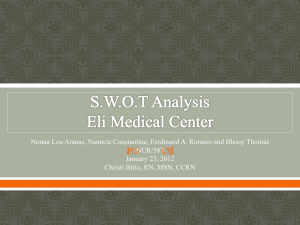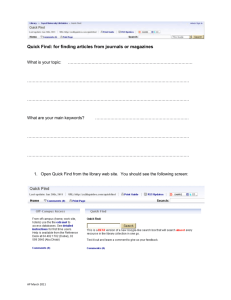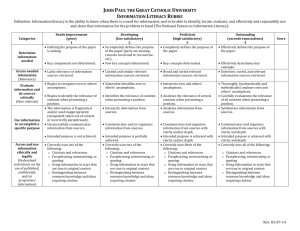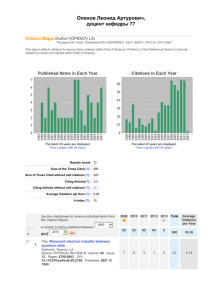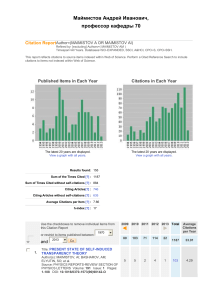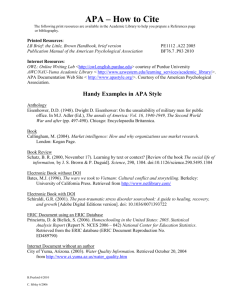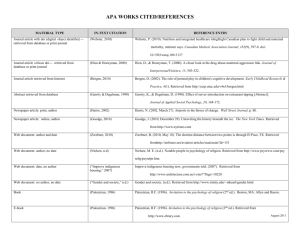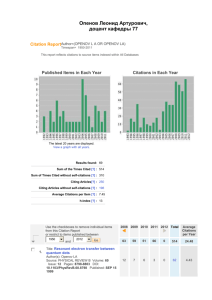Citing sources – author
advertisement
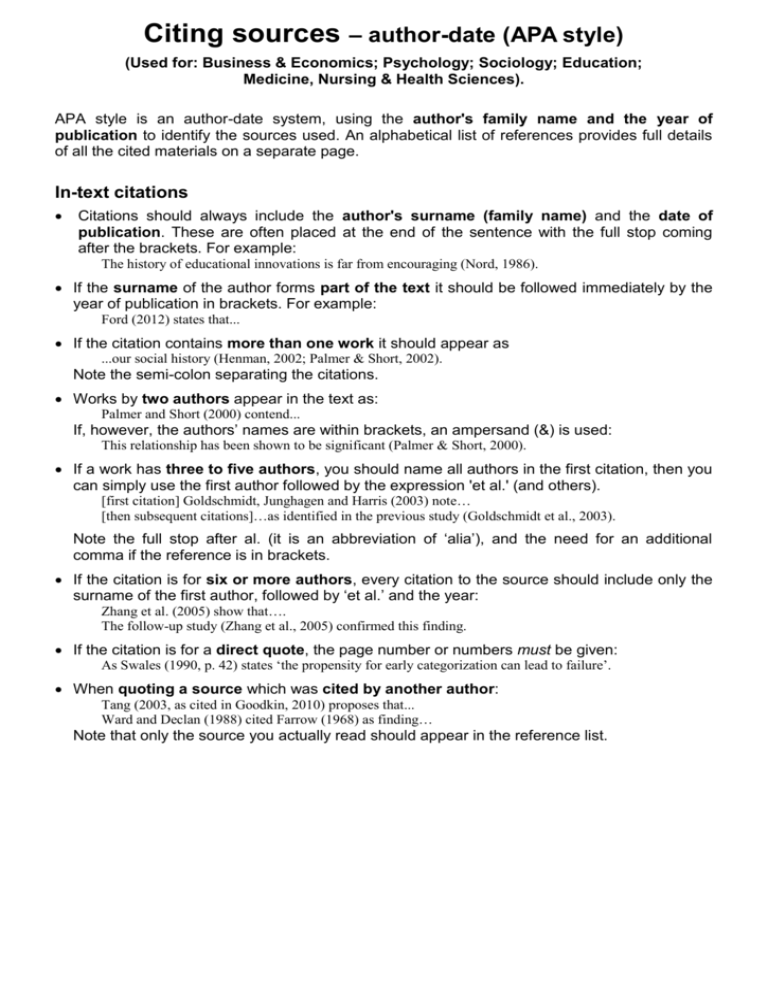
Citing sources – author-date (APA style) (Used for: Business & Economics; Psychology; Sociology; Education; Medicine, Nursing & Health Sciences). APA style is an author-date system, using the author's family name and the year of publication to identify the sources used. An alphabetical list of references provides full details of all the cited materials on a separate page. In-text citations Citations should always include the author's surname (family name) and the date of publication. These are often placed at the end of the sentence with the full stop coming after the brackets. For example: The history of educational innovations is far from encouraging (Nord, 1986). If the surname of the author forms part of the text it should be followed immediately by the year of publication in brackets. For example: Ford (2012) states that... If the citation contains more than one work it should appear as ...our social history (Henman, 2002; Palmer & Short, 2002). Note the semi-colon separating the citations. Works by two authors appear in the text as: Palmer and Short (2000) contend... If, however, the authors’ names are within brackets, an ampersand (&) is used: This relationship has been shown to be significant (Palmer & Short, 2000). If a work has three to five authors, you should name all authors in the first citation, then you can simply use the first author followed by the expression 'et al.' (and others). [first citation] Goldschmidt, Junghagen and Harris (2003) note… [then subsequent citations]…as identified in the previous study (Goldschmidt et al., 2003). Note the full stop after al. (it is an abbreviation of ‘alia’), and the need for an additional comma if the reference is in brackets. If the citation is for six or more authors, every citation to the source should include only the surname of the first author, followed by ‘et al.’ and the year: Zhang et al. (2005) show that…. The follow-up study (Zhang et al., 2005) confirmed this finding. If the citation is for a direct quote, the page number or numbers must be given: As Swales (1990, p. 42) states ‘the propensity for early categorization can lead to failure’. When quoting a source which was cited by another author: Tang (2003, as cited in Goodkin, 2010) proposes that... Ward and Declan (1988) cited Farrow (1968) as finding… Note that only the source you actually read should appear in the reference list. List of references Notice details such as hanging indents, punctuation, abbreviations, italics and use of capitals in the following basic examples. For other types of reference materials refer to the APA Guide Basic format for a book Family name, initial(s). (Year). Title of book. Location of publication: Publisher. McIlroy, D. (2003). Studying at university (3rd ed.). Oxford: Oxford University Basic format for a journal article Family name, initial(s). (year). Name of article. Title of Journal, volume number(issue number), page numbers of the article. doi (preferred) or URL of journal (if no doi available). Mellers, B. A. (2000). Choice and the relative pleasure of consequences. Psychological Bulletin, 126(6), 910–924. doi: 10.1037//0033-2909.126.6.910 McGrath, B. J. & Huntingdon, A. D. (2007). The health and wellbeing of adults working in early childhood education. Australian Journal of Early Childhood, 32(3), 33-38. Retrieved from http:www.earlychildhoodaustralia.org.au Technical/Government report (online) Give author name if available, or producing authority if no author is specified, year, Name of report, minimal capitalisation, (report number if available). Retrieved from URL. [See reference list below for print example]. Australian Bureau of Statistics. (2008). Childhood education and care (No. 4402.0). Retrieved from http://www.abs.gov.au Online resource (if author name not available) Article name. (publication date). In Title of work (Edition). Retrieved from URL Panadeine forte (Paracetamol-Codeine). (2013, February). In MIMS Online (Australian ed.). Retrieved from https://www.mimsonline.com.au Example reference list Ansari, A. (1999). Langevin modes of analysis of myoglobin. Journal of Chemical Physics, 110 (3). Retrieved from http://ojps.aip.org/journals/doc/vol_110/iss.html Australian Bureau of Statistics. (2008). Childhood education and care (No. 4402.0). Canberra, ACT: Author. Bechara, A., Damasio, H., & Damasio, A. R. (2000). Emotion, decision making and the orbitofrontal cortex. Cerebral Cortex, 10(3), 295–307. doi:10.1093/cercor/10.3.295 Goldschmidt, S., Junghagen, S. & Harris, U. (2003). Strategic affiliate marketing, Cheltenham, UK: Edward Elgar Publishing. Palmer, G.R. & Short, S.D. (2000). Healthcare and public policy: An Australian analysis (3rd ed.).South Yarra: Macmillan.




